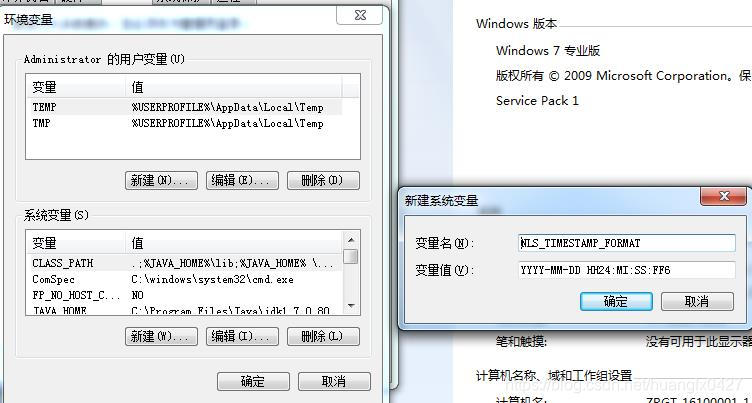当用户使用PLSQL工具查询 TIMESTAMP字段时候,显示 29-AUG-18 06.30.34.581000 PM 类似这种格式时,有点不习惯,可以使用 在 时间戳字段后面 +0 会自动转换为 习惯的 Date 格式


那么同学们会问,这样太麻烦了吧? 我 select * from table 怎么办?
针对这种情况有两种解决办法:
第一种 本次生效,pl/sql sql脚本运行:
alter session set NLS_TIMESTAMP_FORMAT='yyyy-mm-dd hh24:mi:ss:ff';
此种方法 关闭pl/sql 后重新打开后会失效!
第二种 一次性解决这个问题,可以用环境变量来解决
添加一个系统环境变量:
名称: NLS_TIMESTAMP_FORMAT
值: YYYY-MM-DD HH24:MI:SS:FF6
保存后, 重启pl/sql developer 即可.

效果如下:











 博客介绍了在PLSQL工具中查询TIMESTAMP字段时,将不习惯的显示格式转换为习惯的Date格式的方法。可在时间戳字段后 +0 转换,若使用 select * 语句,有两种解决办法,一是在pl/sql中运行脚本,本次生效;二是添加系统环境变量,一次性解决。
博客介绍了在PLSQL工具中查询TIMESTAMP字段时,将不习惯的显示格式转换为习惯的Date格式的方法。可在时间戳字段后 +0 转换,若使用 select * 语句,有两种解决办法,一是在pl/sql中运行脚本,本次生效;二是添加系统环境变量,一次性解决。
















 1228
1228

 被折叠的 条评论
为什么被折叠?
被折叠的 条评论
为什么被折叠?








